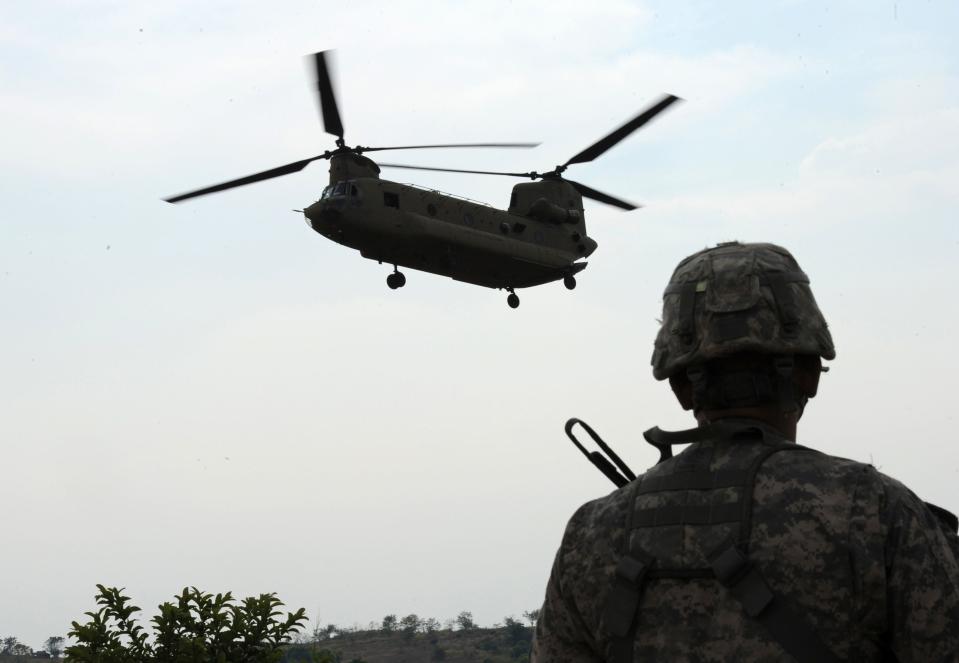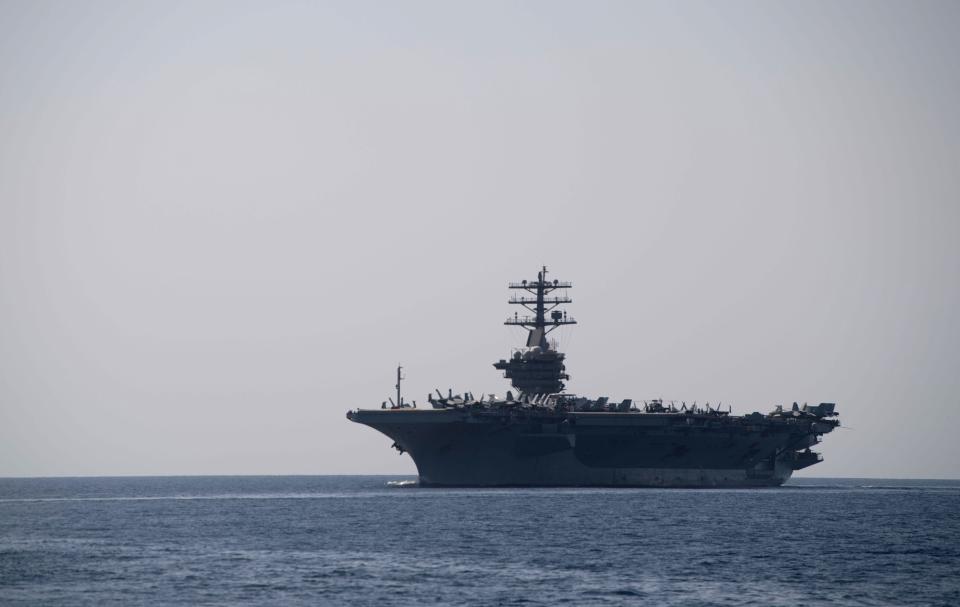Troop suicides rise as Pentagon official points to US military stretched by China
WASHINGTON – A "disturbing" surge in suicide deaths among troops has alarmed senior Pentagon officials who say demands for U.S. troops around the world have grown unsustainable and are contributing to mental health problems.
The increase in death by suicide, particularly acute in the Army, appears unrelated to Iraq and Afghanistan, where deployments have declined in recent years. Instead, the unpredictability of life in the military and the constant demand from commanders for overseas patrols by ships and warplanes, as well as the presence of ground troops, has frayed the force, according to a senior Defense Department official.
The Pentagon divides the world into neighborhoods, six sections of the globe overseen by four-star officers. While demand has waned for Central Command, which includes Afghanistan and Iraq, other commanders have been aggressive about seeking more forces, often citing the rise of Chinese influence, according to the official, who is familiar with the requests but not authorized to speak publicly about them.

China falls under Indo-Pacific Command, but the official said commanders in other parts of the world often point to Chinese influence in their regions when justifying their requests for more forces.
Defense Secretary Lloyd Austin refers to China as the Pentagon's "pacing challenge," warning that the military needs to maintain its edge over a primary adversary.
The result: There aren't enough people and equipment to go around, the official said.
In March, Gen. James McConville, the Army chief of staff, said the Army needs 50,000 more soldiers to meet its commitments.
"I would have a bigger-sized Army if I thought we could afford it," he said. "I think we need it."
Related video: Save a life by knowing the signs of suicide
About 485,000 soldiers are on active duty. The Army should have about 540,000 to 550,000 soldiers, according to McConville.
China spent $261 billion on defense in 2019 compared with nearly $732 billion in U.S. defense spending.
The defense official cited the USS Nimitz, the aircraft carrier whose 321-day deployment in 2020-21 was the longest since the Vietnam War. Ships like the Nimitz are in high demand to deter adversaries such as Iran and North Korea and to provide air cover for the withdrawal of troops from Afghanistan.

Some troops burn out and leave the service early, others cope by abusing alcohol or drugs, the official said. Some die by suicide.
"We have become our own pacing challenge," the official said.
'Stress of military life is real'
Suicide has been increasing in the military over the past three years. In 2018, 326 active-duty troops died by suicide. That number increased to 350 in 2019 and 385 in 2020, according to the most recent Pentagon figures. The number of suicide deaths fluctuates over time as investigations establish the cause of death.
"The stress of military life is real, and that's why the military life is not for every person," said Brad Carson, president of the University of Tulsa, who oversaw Pentagon personnel policy in the Obama administration. "It demands great personal resilience. This is made even harder by time spent away from friends and family, the rigors of deployments, and a tempo of operations that only grows as assets become thinner and more stretched."
Suicide deaths among active-duty troops declined in the first quarter of 2021 to 76, compared with 90 in 2020. But in the Army, the largest of the armed services, suicide deaths increased over the same time period. There were 45 suicide deaths in the first quarter of 2021, compared with 37 last year.
.oembed-frame {width:100%;height:100%;margin:0;border:0;}
The problem has caught the attention of members of Congress and Army Gen. Mark Milley, chairman of the Joint Chiefs of Staff, who testified in June that it had become a "big concern."
"Every death by suicide is a tragedy. It affects the soldier, the family, the formation," said James Helis, director of the Army Resilience Directorate and a senior official for personnel. "There's a moral obligation that we have to protect soldiers. And it's a readiness issue. Whenever we lose a soldier, there are also the effects that it has on the unit. They have to cope with and work their way through that kind of trauma."
Suicidologists say that there is never a single cause behind suicide, which is a complex public health issue. The Army investigates deaths by suicide and has found some common threads among the soldiers and varied causes for their despair, Helis said.
More than 90% of those who die by suicide are men, Helis said. Typically they serve combat units, such as infantry. And they're young: Most are ages 18 to 26. A privately owned firearm is the most common cause of death.
GUNS: 41,000 Americans died from gun violence - 23,000 of those were suicides
They often have a variety of personal struggles, Helis said. They include problems with relationships, mental health issues, financial difficulties and poor job performance that has led to discipline. In some cases, the problems occur in combination.
Two issues have largely been ruled out: COVID-19 and combat deployments, Helis said. There's no evidence to tie the rise in suicide to isolation caused by measures to control the coronavirus, nor do multiple deployments seem to play a role.
"Over the past couple of years, most soldiers who died by suicide had zero or one combat deployments," Helis said. "The combat deployments do not appear to be creating creating an increased risk for our soldiers."
Stress caused by uncertainty does, however, seem to contribute, Helis said. Deployments dates that get moved up with little notice disrupt lives. Something as simple as finding out Friday that weekend work is required causes stress for soldiers and their families.
"One of the big stressors that they have is the uncertainty in their lives," Helis said. "They appreciate that being in the Army is a tough job. It's a demanding job sometimes requires long hours. It requires being away from home for training and for deployments. The big challenge is the uncertainty in the calendar, not not being able to predict far enough out for family events or vacations."
The Army hopes to remedy some of the uncertainty by providing a more predictable schedule for soldiers, Helis said.
More counselors, less stigma
A soldier who served in Alaska, which has seen a surge of at least six suicides just this year, told USA TODAY troops with mental health struggles often had to wait weeks to see a counselor. The soldier, who was not authorized to speak publicly and feared retaliation for his comments, said that while those who talked about suicide were seen immediately by counselors, others soldiers who were struggling faced delays.
Wait times of 12 or 13 days to see a counselor are common, said Lt. Col. Samuel Preston, chief of the Army's Behavioral Health Division and psychiatry consultant to the Army surgeon general. But that is better than the civilian standard of 28 days, he said.
Behavioral health counselors are in short supply for civilians and troops, Preston said. With fewer civilian counselors in Alaska to rely on for soldiers' needs, the Army is sending more active-duty personnel.
COUNSELORS: How to find a therapist if you're feeling having thoughts of suicide
"We are actively prioritizing locations such as Alaska, and other under-served areas where there is not a network, so we're using active duty providers to support those under-served areas," he said.
The stigma of seeking help for mental health problems has been diminished in the past 10 years, Preston and Helis said. Commanders are more likely to urge their soldiers to seek help. The goal is to make visits to counselors no different from seeking treatment for a broken arm or torn ligament.
Talking openly about suicide, Helis said, is no longer taboo.
SUICIDE EXPERTS: What you say (and don't say) could save someone's life
Instead, the Army encourages soldiers to look out for one another. One key to prevention is asking a friend if they are considering hurting themselves, Helis said.
"It's a way of showing concern," he said. "If somebody answers positively, it is kind of a cry for help."
More: Chief Warrant Officer shares story of suicide survival
Service members and veterans who are in crisis or having thoughts of suicide and those who know a service member or veteran in crisis can call the Military Crisis Line/Veterans Crisis Line for confidential support 24 hours a day, seven days a week, 365 days a year. Call 1-800-273-8255 and Press 1 or text 838255 or chat online at VeteransCrisisLine.net/Chat.
This article originally appeared on USA TODAY: Military suicides increase, despite combat decline, alarming Pentagon

